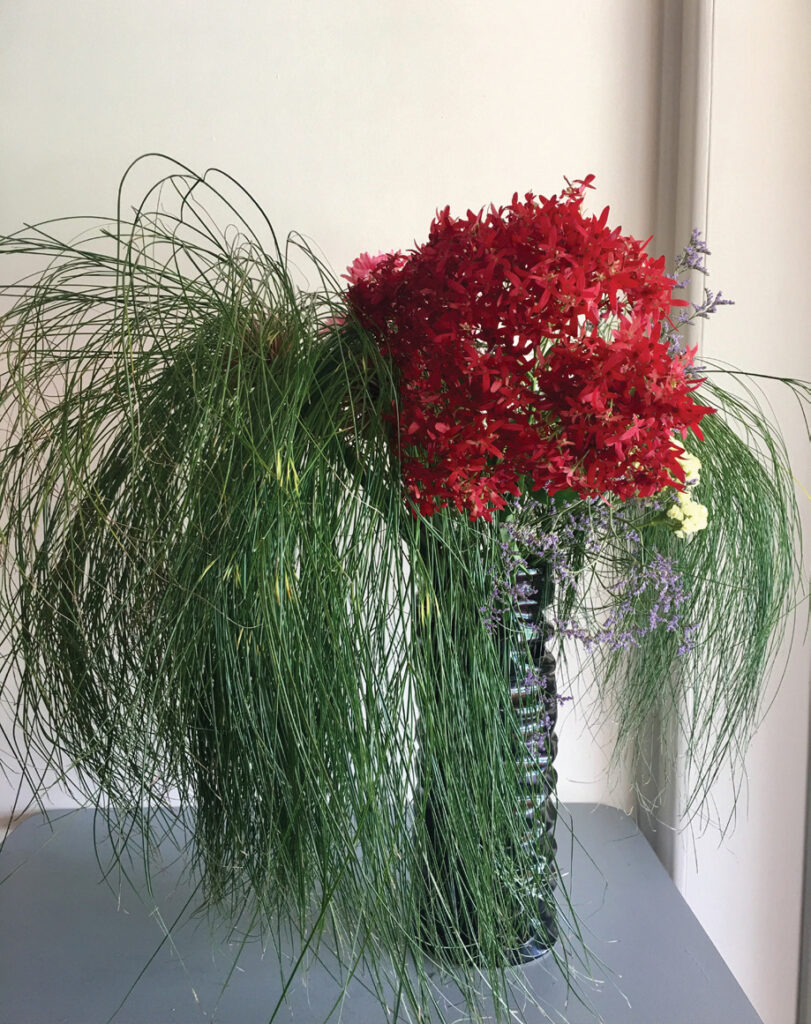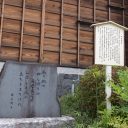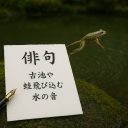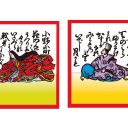
Speaking of Australian flowers, there are many of them with unique shapes such as protea, banksia and bottle brush, that come to one’s mind. The national flower, the golden wattle, called mimosa, and the New South Wales State flower, waratah, are all bush flowers. Australia has many unique and powerful native flowers which are not found anywhere else in the world, and they are called bush flowers.
The other day, I came across two interesting plant materials at a flower market. One was called Papyrus, which belongs to the Cyperaceae family. This plant, which can be seen sometimes during a bushwalk, reaches nearly two meters in height. In ancient times, it is said that papyrus was used as a writing medium, the origin of paper. Indeed, papyrus seems to be the origin of the word “paper” in English and “papier” in French. The other was Red Moon. It looks like a Christmas bush that blooms around December, but it is a little different.
What looks like red flowers are actually leaves, and if you look closely, you will see small white flowers like Easter Lilies, inside. As its name suggests, it is round, crimson and as beautiful as the red full moon shining brightly in the night sky in Australia. The picture above shows the papyrus-and-red moon arrangement in a black ceramic container. Taking advantage of the flowing shape of the papyrus, which resembles a weeping willow, put some of it in a container to make the arrangement asymmetrical, vigorous, and powerful. In Ikebana, there is a way of thinking that you should control balance by breaking balance. It can be very difficult to arrange bush flowers, sometimes, though.
When arranging flowers, you have to see which part of the plant is the front and make it face the front of the arrangement. It is easy to find the face of sunflowers or gerberas. As for branches, such as cherry blossoms, maples or Momiji, we can tell the front from the back by the direction of the flowers or the leaves. It is a bush flower that is difficult to tell the front from the backside, even for people practicing Ikebana for a long time. It is hard to tell, no matter how many times you turn them around. However, you will eventually be able to determine it if you keep on trying seriously.
You may feel Ikebana is difficult as you start thinking about balance or which side should be the front, but the sense of balance can be naturally improved by simply combining the leaves you find around, paying attention to the shades of green and the size of the leaves. Feel free to enjoy arranging flowers. Allow your original ideas to guide you using just a single-flower vase at home. I am sure you will feel very relaxed.
Author

Tada Reishu
Web: https://www.7elements.me/
Facebook: fb.com/yoshimireishu
Instagram: @yoshimi_ikebana












